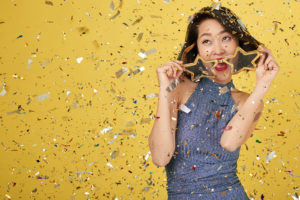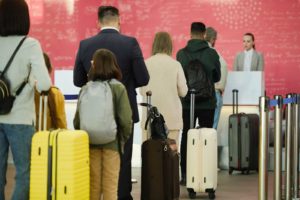
I grew up in a village teeming with folklore. Quiet nights, an overabundance of tall, wild grass, and gigantic trees casting shadows onto the streets led to many whispered stories. As a child, two stories were engraved into my brain: one of the kapre in the mango tree and one of the manananggal.
In between puffs of cigarettes, my grandfather would tell me about the woman with half her body severed, with enormous, bat-like wings propelling her into the sky. We were at his sari-sari store, waiting for dinner. The news would be playing on the small television, drowning the sound of cicadas. I would be seated in front of him, sulking, looking longingly out at the kids still playing on the streets.
“She’s looking for children,” he’d say, nonchalant, eyes at the sun descending into darkness. “So you better not go out.”
I was scared enough to follow his advice. For years, I feared the manananggal, and in general, the aswang – flesh eaters and inhuman creatures that hid among us. There were some clues, the elderly told me. The absence of a philtrum was one. It had me staring at random women selling my grandmother vegetables at the palengke.

These creatures weren’t just looking for children, but fetuses. Kids shared stories their own parents and grandparents told them: how they’d look for open windows at night and snatch away babies from their cribs. They even took away fetuses with sharp claws and tongues from women’s stomachs.
I imagined the manananggal’s mouth bloody and her entrails spilling out of her stomach. In my mind’s eye, for some reason, the manananggal was also beautiful.
Kids shared stories their own parents and grandparents told them: how they’d look for open windows at night and snatch away babies from their cribs. They even took away fetuses with sharp claws and tongues from women’s stomachs.
The Origins
My beliefs weren’t that far off from history. In The Aswang Syncrasy in Philippine Folklore by Maximo Ramos, the manananggal was categorized as one of the viscera suckers. They were all fair, buxom, attractive women by day, indistinguishable from other residents. By night, their upper bodies detached and grew bat wings. Their long, tubular tongues would come out on the hunt.

The description of the manananggal overlaps with tiktik and wakwak. Some claim they’re one and the same, but others insist they are different creatures.
One thing’s for sure: you don’t want them near your window.
During the Spanish colonization, they were matatanggal or just “tangal,” meaning “separate” or “severe” in Tagalog. Their names varied in Bicol (aswang na lupad, or flying aswang) and Ilocos (buruka, borrowing from the Spanish bruja or witch). Spanish friars reported native Filipinos reporting the same sighting of the manananggal.
During the Spanish colonization, they were matatanggal or just “tangal,” meaning “separate” or “severe” in Tagalog.
In 1996, Herminia Menez had a theory: manananggal were predominantly women due to colonization. Pre-colonial Filipina women and transvestites held sacred roles as healers and priestesses, or what we know now as babaylan. To slander women in Filipino society and establish patriarchy, shamans became witches consorting with the devil.
In the same document by Maximo Ramos, locals from Leyte, Capiz, Catanduanes, and Albay reported different customs of these viscera suckers. Some manananggals would bend for minutes until their body could detach or stare at the full moon until tears seeped out of their eyes. Only then would they severe themselves from their lower bodies.

Historian William Henry Scott noted that the manananggal, and the aswang in general, “devoured the liver like slow cancer.” At one point, it was rumored that viscera suckers only went for the sick and diseased. Then, children and pregnant women added to the list of the vulnerable.
Later on, locals realized that even able, healthy people were targeted.
No one could be safe.
In The Present Time
In my fear, I read about the usual fare of protective methods from the supernatural: garlic, prayers, and salt. Some Filipinos hung marine animals on their roofs, believing that it’ll remind the aswang of saltwater.
The custom of an extended family sleeping together in one hut can be explained by the aswang, too. With many family members, some could keep watch as the rest of the family slept on the hut’s sides, away from the windows. However you think of it, it’s a pretty economic living option.
But these defensive accounts don’t mean Filipinos never went for the offense. After all, they say that the best way to kill any aswang, including a manananggal, was to stab it with a sharpened piece of a bamboo stick. A Filipino community persecuting and lynching suspected aswangs and manananggals is common and not isolated in ancient times.
I’ve never seen such persecution myself. Maybe I had kept myself protected enough in my childhood, staying in and shutting doors, that I never had to suffer a sight or a visit. Today, though the fear has waned, I hesitate when I’m asked if I believe in the manananggal’s existence.
I don’t know. I grew up with folklore as truth, and they’ve run deep. I live in a quiet village where wild grass, tall trees, and abandoned homes are abundant. My imagination runs high when I look up the evening skies.
At least it’s another reason to make sure the windows are closed and the doors locked. Who knows? You could never be safe enough.
References:
The Aswang Syncrasy of Philippine Folklore, Maximo Ramos (1969)
Explorations in Philippine Folklore, Herminia Me ez (1996)
Barangay, William Henry Scott (1995)
Aswang and Other Kinds of Witches: A Comparative Analysis, Kathleen Nadeau (2011)
Archaeological Inference and Another Look at Junker’s Burial, Bonn Aure (2004)
























